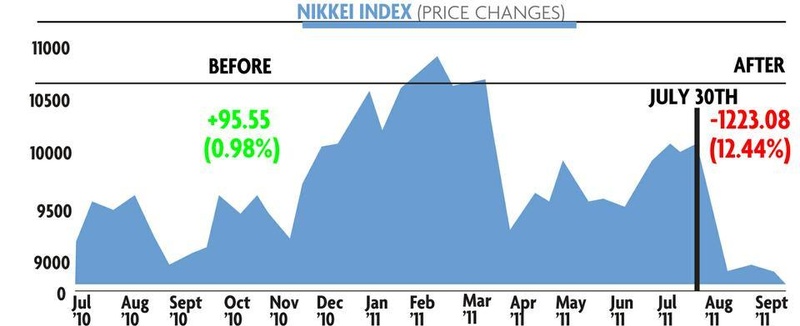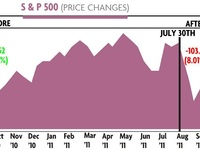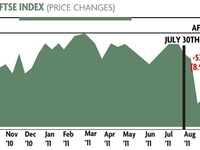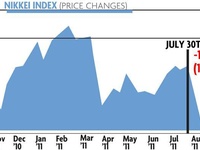Harvard’s endowment returns of 21.4 percent in fiscal year 2011, announced last week, beat benchmarks and were the highest in recent memory. But since the close of the fiscal year on June 30, the markets have shown extreme volatility, with some indices moving 4 percent daily.
While analysts applauded the recent returns of the Harvard Management Company, which manages the University endowment, the portfolio’s significant holdings in public equities expose it to these market swings.
Harvard’s gains in the past year represent the first major step in recovering losses that resulted from the 2008 financial crisis, when the endowment’s value plunged by nearly 30 percent, from $36.9 billion to $26 billion.
Since then, HMC has been reestablishing the value of the endowment—which yielded an 11.4 percent return in the 2010 fiscal year. It has done so while adopting a more conservative risk management structure to weather volatile markets. Analysts agree that the current year will begin to test the new risk structure as HMC fights to regain its pre-crisis endowment value.
THE FUTURE
Harvard has not said how it has performed since the end of June. After the close of the fiscal year, a number of factors caused concern for the broader financial community.
In August, the Standard & Poors rating agency downgraded U.S. Treasury debt from AAA to AA+ and further gave it a “negative outlook.”
At the same time, uncertainty about Europe’s fiscal future has increased, with investors questioning the abilities of Greece, Italy, and Spain to pay back their sovereign debt bills.
Even though HMC has actively reworked its positions in certain asset classes and specific securities to reduce risk—even hiring a chief risk officer in 2009 to help with the restructuring—Harvard will still be affected by these large fluctuations. “We are not immune to those impacts,” HMC President and CEO Jane L. Mendillo said in an interview last week.
Risk management is crucial, said Mebane T. Faber, a fund manager at Cambria Investment Management Inc. and co-author of “The Ivy Portfolio: How to Invest Like the Top Endowments and Avoid Bear Markets.”
HMC currently has about 12 percent of its portfolio invested in foreign equities. While that asset class is considered an area of great opportunity, volatility in Europe has threatened its performance in the months since Harvard’s fiscal year ended. And U.S. markets have also seen extreme swings in recent weeks.
But the financial problems in Europe may deal a relatively softer blow to Harvard due to the endowment’s low-risk stance, according to Cathleen M. Rittereiser, co-author of the book “Foundation and Endowment Investing,”
Because Harvard’s portfolio is designed to limit volatility compared to many for-profit funds, HMC’s investments might have fared better over the last few months than the S&P 500 Index, which has dropped 10.9 percent since June, she said.
Because of the efforts to reduce volatility, “in tougher years, the endowment should do better than the S&P,” said Lawrence E. Golub ’80, who runs Golub Capital, a private equity and venture capital firm.
“A lot of the pain that Europe is suffering is already priced into the financial markets,” Golub said. “I hope they only have limited exposure to the sovereign debt of risky European countries.”
Read more in News
Henderson, Melton Named University Professors
















